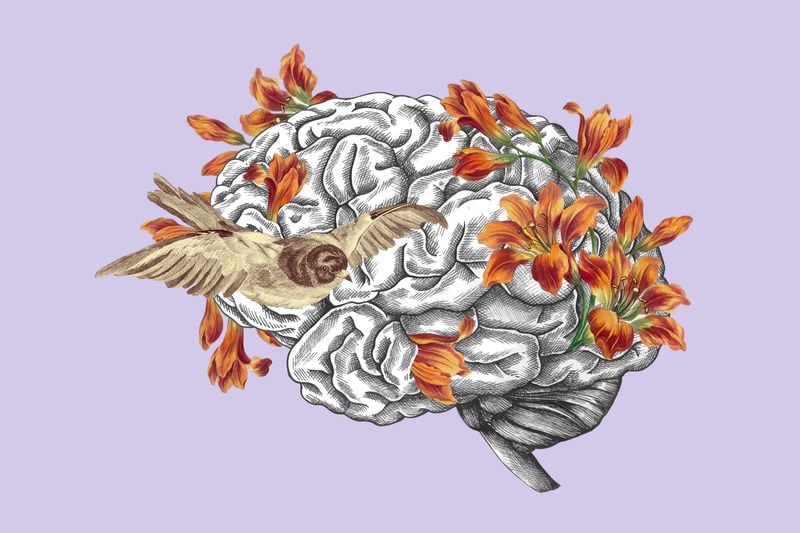In a world where self-discovery often takes unexpected turns, the journey of many autistic adults is often seen as a kind of rebirth or second life. Especially for those who, for years, have had to deal with the uncertainties and effects of living with a disease that is still stigmatized in many ways.
According to data provided by the World Health Organization in 2023, 1 in 100 children are in the area Autism spectrum However, a large number of cases go undiagnosed during childhood. Many have been facing the challenges of living in a society unfriendly to neurodivergences for years, and the diagnosis of autism in adulthood appears to them as a light that opens new paths towards understanding and self-acceptance. .
According to information released by the UCLA Health Department in California, Autism Spectrum Disorder (ASD) , is a disease that affects a person’s neurological development and is usually diagnosed during childhood. However, Many people on the spectrum — especially women — tend not to be diagnosed until adulthood, according to UCLA data. The tendency to go undetected by the system has been so prevalent among autistic women that traditional estimates have for years proposed that ASD is a predominantly male disease, with diagnoses in men being four times more likely than in women.
Shifts in the traditional paradigm on mental health and neurodivergences have led to new research that is beginning to account for a different reality. And, according to recent studies, the proportion of autistic women and men is very similar. Despite this, another data published by Health UCLA highlights that gender differences persist when it comes to ASD. It is estimated that up to 80% of autistic women have not yet been diagnosed by the age of 18.
Thousands of women who are diagnosed with autism as adults perceive it as a kind of rebirth that allows them to connect with childhood situations. Steps which may have been difficult but which can now take on new meaning. Angélica Rebolledo is a clinical psychologist and mother of two children. She knew she suffered from the autism spectrum as an adult. “I was diagnosed when I was 35,” he says. “Due to my children’s previous diagnoses. Angélica, like many autistic women who were not diagnosed as children, says that learning about ASD with her children made her realize the similarities with her own experience. This is how she also went to a neurological consultation to dispel her doubts and discovered that not only was she autistic but that she had also lived all these years with attention deficit hyperactivity disorder. without any treatment.
The specialists in charge of the publication Health UCLA specify that, for an adult, a diagnosis of ASD is generally “a great relief”. This allows them to explain physical and emotional symptoms that they could not otherwise understand and yet have affected them throughout their lives. This is precisely what happened to Angélica when she first heard confirmation of her diagnosis. For her, the diagnosis marked a second departure in many ways. “It’s been a process of rebirth. One before and one after the diagnosis,” he says. “I was able to experience a very beautiful internal healing process. “I was able to reflect and understand my past from a more conciliatory and empathetic perspective, with less judgment of myself or what I may have previously put off about myself,” Explain. The psychologist comments that, for years, she wondered about the difficulty of integrating into a group and also about the reasons why she generally did not do things the way her environment expected her.

Angélica’s experience as an adult woman living this kind of second life following her diagnosis is not unique. As a therapist and creator of the Espacio Neurodivergent therapy center, she says many people on the spectrum or experiencing other neurodivergences share this idea of post-diagnosis rebirth. “It’s important to respect the individuality of how everyone wants to experience this process,” he comments. Angélica was able to observe in her patients all types of reactions involving emotions that could seem contradictory or paradoxical. “I think it’s completely valid to feel grief, anger or fear when you receive confirmation and, at the same time, feel relief and happiness,” he explains. .
According to the specialist, it is these different sensations that help us understand who we really are. “You start to establish your own identity from a new perspective,” he says. He adds that during this process, family support is essential, both for children and adults with ASD. “We no longer seek to fit into the vision of the most neurotypical society” , account. “The focus is more on how to be myself with the potential and the difficulties that I have. »
Angélica insists that autism is not a fad or growing trend as some believe. “Today there is much more information on this topic and the diagnostic ability has improved, but much research is still needed. Especially for autistic women,” she says. And she adds: “In many generations like mine, women were barely diagnosed and faced great difficulties. In this sense, for many mothers, our children have been the key to mutual understanding. Today I can look at situations and my children, understanding who I am and, also, seeing a more realistic present and future.
Source: Latercera
I’m Rose Brown , a journalist and writer with over 10 years of experience in the news industry. I specialize in covering tennis-related news for Athletistic, a leading sports media website. My writing is highly regarded for its quick turnaround and accuracy, as well as my ability to tell compelling stories about the sport.


